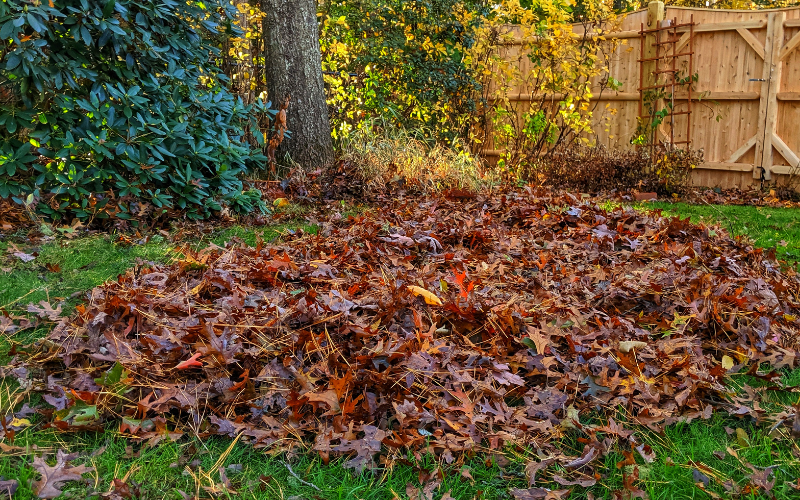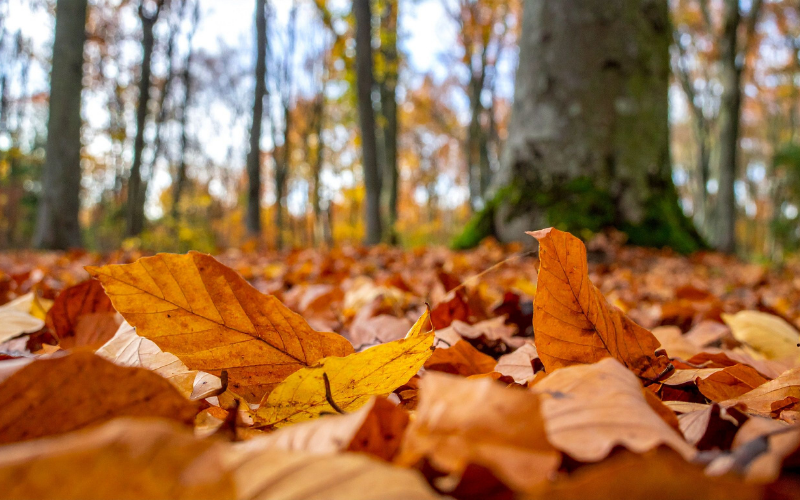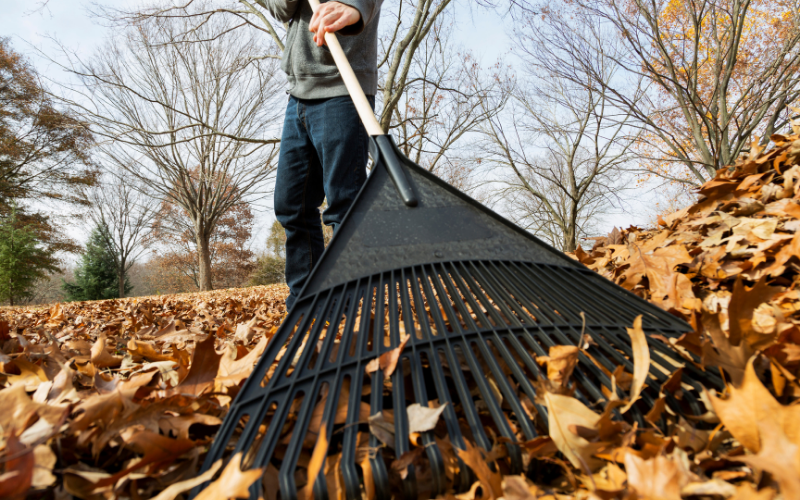
If you’ve ever stood in your yard with a rake in hand, wondering whether every single leaf needs to go, you’re not alone. In New Jersey, fall leaf cleanup is an essential part of lawn care—but that doesn’t mean you need to worry about removing every leaf.
This is a simple guide that will help you understand the best ways to sustainability remove, repurpose and support the microenvironments within your landscapes. This will provide you with a guide of what you should rake, what you can leave behind, and the implications to the overall health of your landscape.
Why Leaf Cleanup Matters?
After the leaves fall from the trees, they may look harmless, but, depending upon where they fall, they can cause detrimental harm to the investments created on your property.
On your lawn, an excessive layer of leaves can block sunlight, trap moisture, carry diseases, and create a temporary home for unwanted pests.
In your garden beds, naturally fallen leaves (not jumbo piles), along with pine needles, are just what your plants need to get through the long winter and make your plants stronger!
So yes, proper leaf practices matter to ensure the overall sustainability and strength of your lawn and gardens.
What Should You Rake?
Thick layers of leaves on your lawn: An excessive amount of leaves fall on your property can cause more damage than you expect.
A naturally occurring layer of leaves can smother the grass, limiting its ability to perform photosynthesis, which is the natural process where plants use the sunlight and to create food energy for the plant to survive. The leaves block amount of sunlight, which will damage grass over the winter.
In addition, the layer of leaves can reduce air circulation causing moisture to be trapped. This is extremely dangerous for the grass because diseases and pathogens thrive in that environment!
Leaves on hard surfaces: Any amount of leaves that fall on the driveways, walkways and patios can cause detrimental danger to people. The leaves will begin to break down and cause these surfaces to become slippery, especially after a weather pattern occurs.
Clogged gutters and drains: Blockages in your exterior drainage can lead to water pooling or even foundation issues.
Excessive coverage in garden beds: An excessive coverage of leaves can cause irreversible damage to plant material.
The root structure is the most important aspect in the longevity of a plant. When there is an excess amount of leaves present the roots can be exposed to suffocation, diseases, pathogens, pests, and nutrient imbalances.

What Can You Leave?
Light coverage in garden beds: A naturally occurring layer of leaves in planting beds can aid in insulating the soil and decompose to naturally feed your ornamental plants.
The breakdown of the organic leaf matter allows the necessary nutrients that plants require to thrive to organically be returned. This can act as the late season fertilization application to sustainability improve soil conditions and improve plant health throughout the winter.
Leaves in natural or wooded areas: These can stay! They support local ecosystems and don’t harm maintained turf.
Chopped leaves on your lawn: If you run a mulching mower over dry leaves, you can leave the shredded pieces on the lawn.
The mower chops the leaves into small fragments that quickly decompose, returning valuable nutrients such as nitrogen, phosphorus, and potassium to the soil.
This natural process improves soil structure, enhances microbial activity, and helps retain moisture. Mulching leaves instead of bagging or raking them also saves time and reduces yard waste going to landfills. A thin layer of finely shredded leaves—generally about half an inch deep—is ideal, as it won’t smother the grass.
Over time, the decomposed leaf matter acts as natural fertilizer, promoting a healthier, greener lawn in the spring.
When to Clean Up the leaves?
In New Jersey, aim to do your final lawn cleanup after most of the leaves have fallen, but before the first major snowfall. Wet, frozen leaves are not only harder to remove but can also smother your grass and promote mold or disease.
Timing is key! Typically, mid to late November is a good window for that final cleanup, depending on local weather patterns and the types of trees on your property.
If your yard has many trees that shed at different times, plan on doing multiple cleanups throughout the fall season to stay ahead. Regular maintenance keeps your lawn healthy, prevents thick leaf mats from forming, and makes spring lawn care much easier.
Pair It with a Fall Refresh
Fall is a great time to start thinking about how you want your spring garden to develop! A fall refresh for your beds, can reduce spring clean-up!
Easy fall garden bed practices such as edging your walkways, dividing perennials, and preparing your landscape for winter. If you are already tackling leaf cleanup, consider bundling services. Cedarwood Landscaping offers full seasonal maintenance services tailored to your property’s needs.
Let Us Handle the Heavy Lifting
Not everyone has the time—or the back—for proper fall cleanup. That’s where we come in.
At Cedarwood Landscaping, we specialize in environmentally sustainable practices that keep all the properties we take care of looking their best year-round.
Contact us today to schedule a customized fall cleanup that protects your landscape and enhances your curb appeal.

